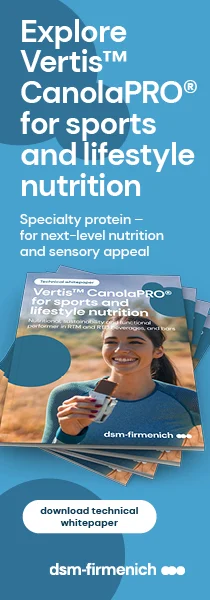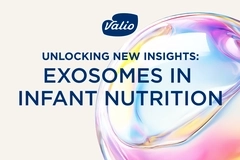Superbug crisis: Scientists are developing probiotic cocktails against antibiotic resistance
Researchers warn that antibiotic treatment unintentionally makes the gut a more hospitable environment for drug-resistant enterococci (VRE). Probiotics are being explored as a new approach in new microbiome-based therapies against these antibiotic-resistant superbugs that are the cause of hospital-acquired infections.
Nutrition Insight interviews the experts from Imperial University, UK, about potential microbial metabolites and probiotic cocktails aimed at restoring beneficial gut bacteria that can suppress VRE growth. They believe their findings could help develop next-generation microbiome therapies to prevent infections before they occur.
“It was striking how antibiotic treatment reshapes the gut in a manner that unintentionally favors pathogens like VRE — it highlights the delicate balance between using antibiotics to treat infection and the risk of fueling resistance,” comments Dr. Olivia King, research associate.
SCFAs against VRE
The study explains that healthy gut microbes produce metabolites that usually suppress harmful pathogens.
“The microbial metabolites that we found can inhibit VRE growth are short-chain fatty acids (SCFAs). SCFAs are mostly produced through the fermentation of polysaccharides, such as fiber, by members of the gut microbiota, but you can also produce some SCFAs from protein as well,” comments associate professor Dr. Julie McDonald.

The study details that acetate, propionate, butyrate, and valerate significantly suppress bacterial growth at high concentrations. A mixture of these metabolites showed synergistic effects, providing higher growth suppression than individual metabolites.
Antibiotic treatment was found to alter which nutrients are available in the gut. It increased the availability of nutrients for VRE while decreasing metabolite production. This is because in a healthy environment, gut bacteria compete for nutrients and produce SCFAs, which serve as natural antibiotics against VRE.
McDonald adds that although their paper in Nature Communications did not investigate how diet might impact VRE-growth, previous studies have. Diets impact the formation of the gut microbiome, so there is a possibility that diet can have an impact as well.
Microbial metabolites SCFAs can inhibit VRE growth.Instead, the study found that a mix of short chain fatty acids provided a complete or near complete suppression of VRE growth.
Solutions to dysbiosis
King and McDonald believe that nutrition-based prevention strategies customized to target the pathogen’s specific “feeding ground” could be a challenging way to address each pathogen.
“Both types of pathogens that we studied in our paper can utilize a wide variety of nutrients that are found in many foods,” says King.
“Instead, our lab is currently developing microbiome therapeutics against drug-resistant pathogens. This microbiome therapeutic would consist of a mixture of healthy gut bacteria that together can deplete all the nutrients that are increased with antibiotic treatment and restore the conditions that are found in a healthy gut prior to antibiotic treatment.”
McDonald explains that this mix of healthy gut bacteria could be a better solution to restore the competition for nutrients typically seen in the intestine with a diverse microbiota.
“Similarly, mixtures of SCFAs could potentially be administered alongside antibiotics to prevent VRE growth in the gut.”
 A mixture of propionate, butyrate, and valerate metabolites significantly suppresses bacterial growth at high concentrations.“This could be more helpful for a patient during antibiotic treatment, as eating a diet rich in polysaccharides may not be effective if the antibiotic has killed the gut bacteria that would normally ferment the polysaccharides to produce the SCFAs,” she suggests.
A mixture of propionate, butyrate, and valerate metabolites significantly suppresses bacterial growth at high concentrations.“This could be more helpful for a patient during antibiotic treatment, as eating a diet rich in polysaccharides may not be effective if the antibiotic has killed the gut bacteria that would normally ferment the polysaccharides to produce the SCFAs,” she suggests.
Deplete the pathogens
Nutrients released by antibiotic damage feed harmful bacteria. We ask King and McDonald whether controlling these nutrient shifts might be as important as restoring beneficial microbes.
However, they emphasize that controlling nutrient shifts through diet would be difficult. McDonald adds: “A more effective approach would be to restore the presence of healthy gut commensals in the intestine.”
“Our research has shown how pathogens, including VRE and Carbapenem-resistant Enterobacterales, consume a variety of monosaccharides, disaccharides, and amino acids,” says King. “We were able to show how, while these bacteria might prefer certain nutrients over others, when a preferred sugar or amino acid is depleted, the pathogen is able to shift its nutrient utilization to a less-preferred nutrient.”
“Since the pathogens have this nutrient utilization flexibility, it would likely be easier and safer to deplete all nutrients that the pathogens can use, as you would normally find in a healthy gut microbiome.”
The researchers used ex vivo and in vivo models to show that five antibiotics promoting VRE colonization disrupted resistance, increasing nutrient availability and decreasing microbial metabolites.














